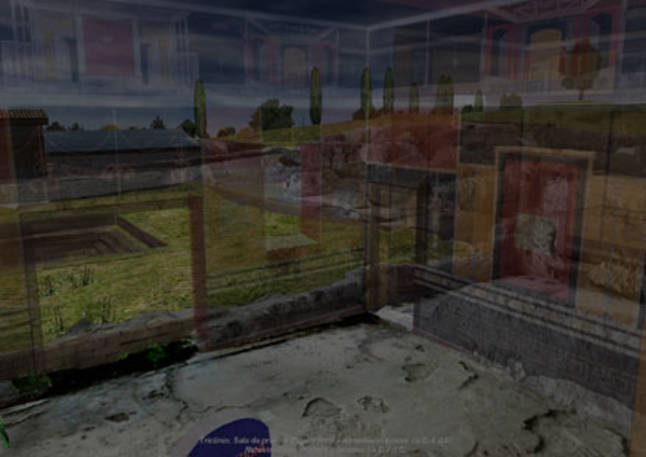


Roman history buffs can pass the time of day with the Emperor Augustus and wander around the imperial residence of his wife, Livia, thanks to a groundbreaking new virtual archaeological museum that opened to the public in Rome.
The museum at the Baths of Diocletian uses avatars - or onscreen characters - and interactive computer game technology to allow visitors to explore reconstructed Roman sites along the ancient Via Flaminia, the road built in the 3rd century BC to connect the capital to modern-day Rimini on the Adriatic coast.
Four visitors at a time can sit at computer consoles in a darkened room and use joysticks to move their avatars through the virtual Roman world, switching between buildings as they were in their imperial heyday and the ruins seen today at the click of a button.
The adventures of the avatars - Marta, Katrina, Mike and Omar - are simultaneously displayed on a large screen for an audience of up to 12 other visitors who can watch wearing special 3D glasses.
''It's the first multi-user virtual archaeological museum in Europe in which the visitor is a real protagonist in cyberspace,'' said project head Maurizio Forte of the National Research Council. Forte's team of 20 art historians, archaeologists, architects and computer experts spent two years developing the project using satellite navigation mapping technology, archaeological surveys of ruins and literary sources to recreate over 3,000 square metres of Roman landscape and buildings.
The Milvian Bridge across the River Tiber and a necropolis at Grottarossa are among the stops on the initial section of the Via Flaminia that have been reconstructed with three-dimensional computer graphics.
But the highlight of the virtual museum is the first-century BC Villa of Livia, whose grey, uninspiring ruins in the northern outskirts of Rome are brought back to life as a grand imperial residence surrounded by rolling grassy hills.
Visitors can use their avatars to nose around at will, wandering through courtyards and beautiful frescoed corridors and interacting with Roman characters they bump into along the way.
Livia shares the secrets of her famously elaborate hair-do with avatars taking a sneak peak at her bedroom and explains her passion for plants in a stunning garden filled with lemon, orange and fig trees. A painter, a gardener and a soldier are happy to stop work for a chat, and avatars may also meet a gruff Emperor Augustus.

''Visiting Roman ruins and reading about the Empire can never give you a sense of the scale of the architecture,'' said one of the first visitors to try out the virtual experience on Saturday. ''But actually walking around the house with an avatar you understand how the rooms and corridors relate to each other, and you get a much closer idea of how people lived''. ''The interactive element really sucks you into the Roman world, and I admit I was quite scared when I ran into Livia or Augustus in case they were cross with me for intruding,'' he added.
In their roles as cybertourists the avatars can only walk at a leisurely pace, and for the moment all dialogue is in Italian.
The National Research Council plans to add the Villa of Livia to online virtual reality community Second Life in the next few weeks, giving web users worldwide a chance to explore the museum in cyberspace.
The interactive experience, unveiled on 9 January, will be a permanent feature of the museum.
Terme di Diocleziano, Via Enrico de Nicola 79, tel. 0639967700. 09.00-19.45. Closed Mon. Entrance €7.
Source URL: http://newsite.iitaly.org/magazine/focus/art-culture/article/cybertourists-walking-around-flaminia-antica
Links
[1] http://newsite.iitaly.org/files/11200360203jpg
[2] http://www.vhlab.itabc.cnr.it/flaminia/index02.html